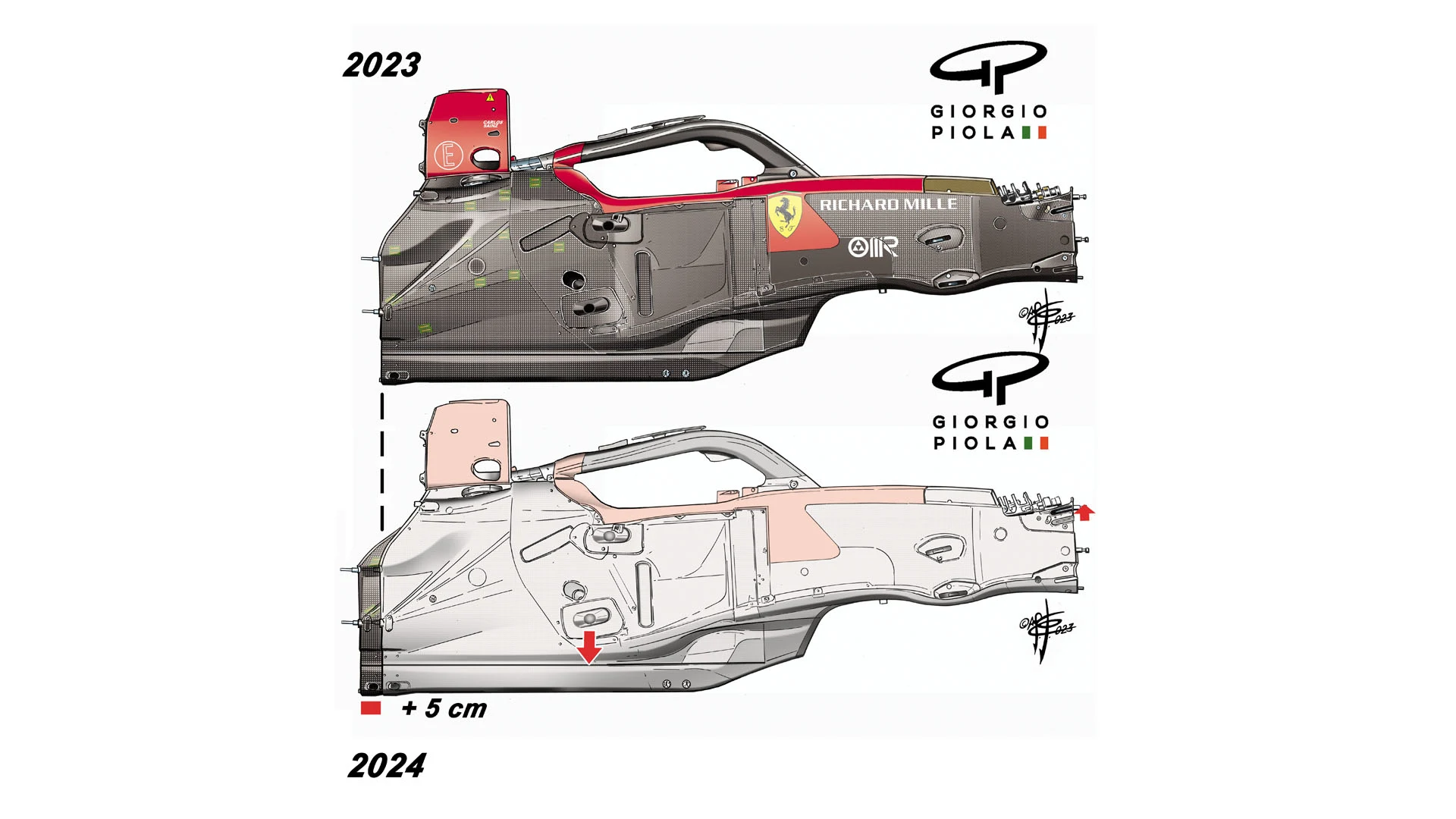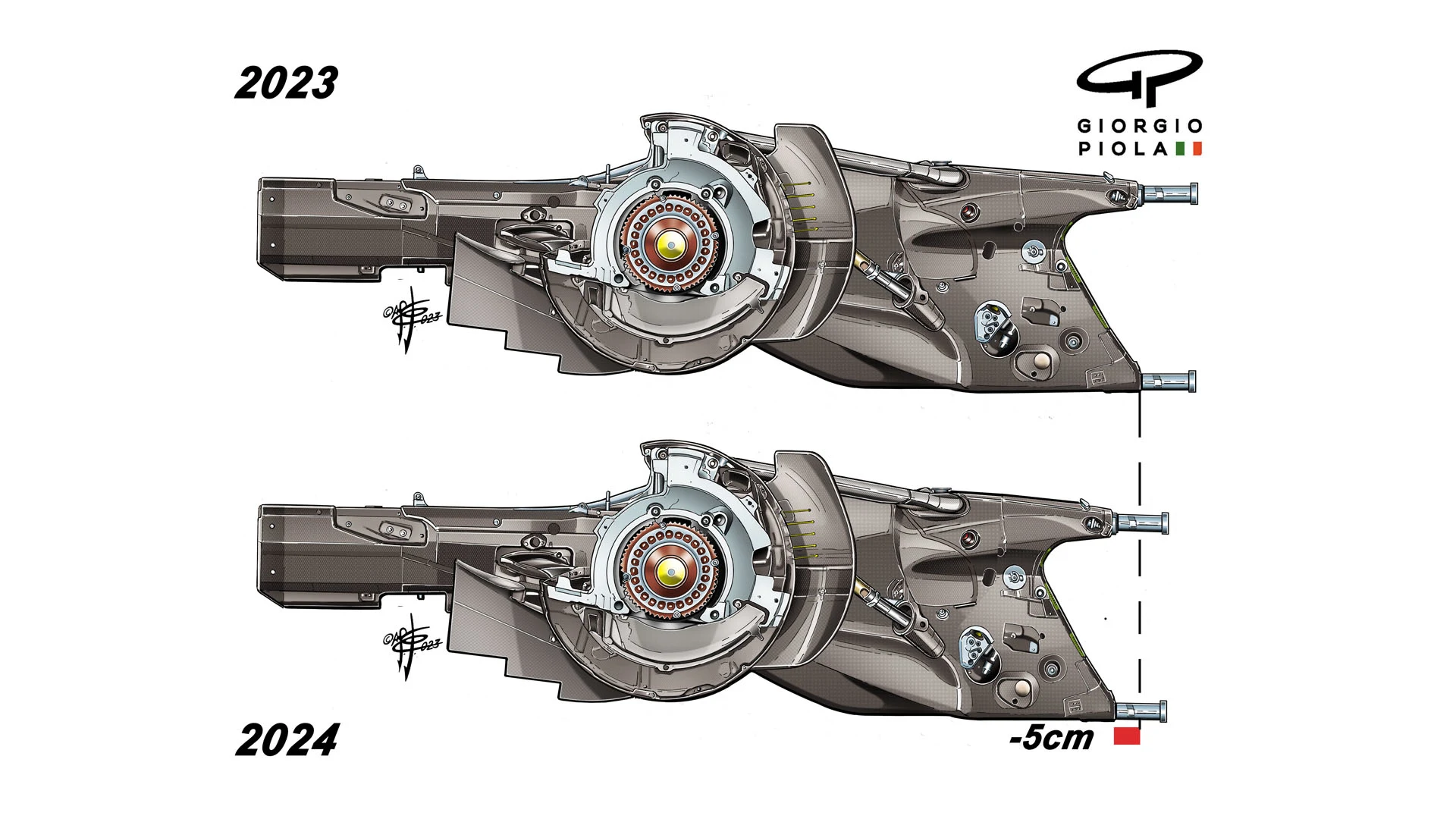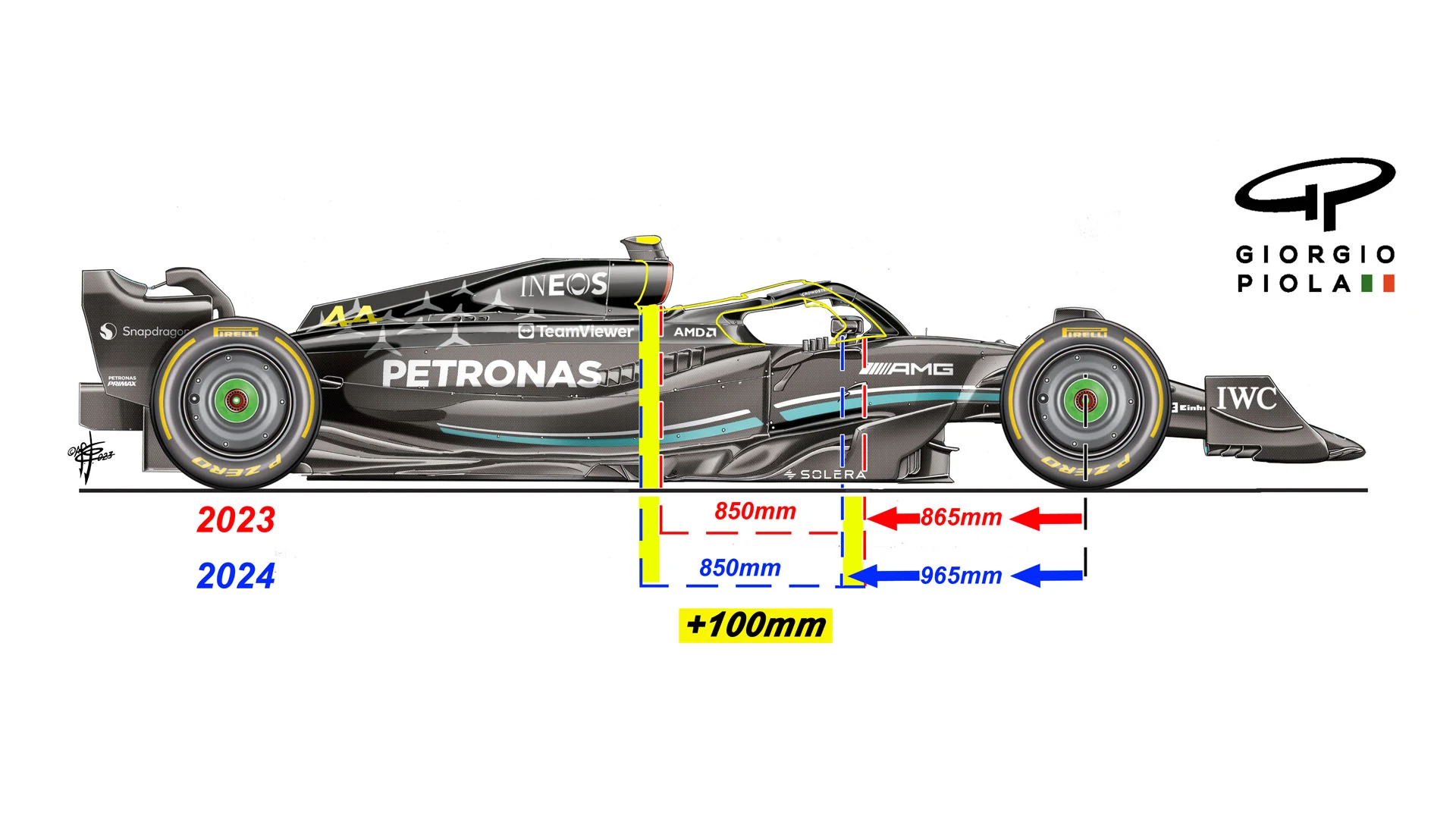In looking at trends of the 2024 cars, the theme is inevitably that of moving further towards the Red Bull design of the previous two years. The two teams who had previously been the furthest away from that general layout were Mercedes and Ferrari (albeit in quite different ways). So it is those two teams who have made the most fundamental changes.
After being left even further behind Red Bull last season than had been the case the year before, there was a dawning realisation at both Mercedes and Ferrari that a fundamental re-evaluation was needed in the concept of their cars for ’24.
Those cars, the Mercedes W15 and Ferrari SF-24, have now been revealed and are about to hit the track in Bahrain. We can see that in both cases, that re-evaluation has involved moving the major masses of the cars within their wheelbases in an attempt at creating a more effective aerodynamic platform. Here we look at how each of those teams has gone about doing that.
READ MORE: Why Red Bull’s aggressive RB20 is likely to have alarmed their F1 rivals
For Ferrari, the change has been driven by the move away from the big, bluff sidepod fronts which out-washed the airflow out and away from the cars of 2022 and ’23 to a more Red Bull-like big undercut there.
They were unable to make this change to last year’s car because of a couple of hard point limitations, as the team’s technical director Enrico Cardile explained at the time, saying, “The main difference between our car and a Red Bull-style car were under the radiator inlet – the pod design was different. Ours was fatter to use this portion of the bodywork to pressurise the area in front of it to control the tyre wake.
“[With this sidepod design] we didn’t need to design a very tricky shape chassis and we put the electronics just below the radiator and with the lower SIS [side impact] bar we positioned it at the maximum height allowed by the regs… If we wanted a different shape, these two things – the position of the electronics and the SIS position – became quickly a constraint.”

The side impact bar location was ultimately what made any concept change impossible, as this is a fundamental part of the chassis, as the strength of the chassis has to be made to match this location. Moving the SIS bar down for the ’24 car has and fundamentally changing the chassis shape accordingly has enabled the desired undercut in the front sidepods. But that change will also have demanded some relocation of the various radiators. Taking away area from the front of the bodywork has meant moving some radiator area further back.
Ferrari has created the space for the relocated radiators by increasing the length of the chassis by 5cm behind the cockpit. With a corresponding 5cm reduction in the length of the gearbox casing, the car has retained the same overall length.

At Mercedes, sidepod design was only part of the targeted change. To achieve the aerodynamic characteristics sought from the underfloor and how that interacts aerodynamically with the outer airflow, Mercedes sought to move the cockpit slightly further back within the wheelbase – in this case by around 10cm. The previous two models had their cockpits closer to the front wheels than any other car as part of the original ‘zero-pod’ design (which was carried through into the initial ’23 car) which used an exposed upper SIS bar to direct airflow downwards towards the floor edges. Because of the dimensional regulations, having the cockpit forward allowed the upper SIS bar to extend further out making it potentially more aerodynamically powerful.

Mercedes switched to the undercut sidepod design from Monaco of last year as unlike Ferrari they were not constrained by where they’d placed the lower SIS bar. But this was a less than optimum match with the rest of the bodywork geometry – ie if they had been designing an undercut pod car from the start, the chassis would be a different shape. The W15 represents that optimised shape and this has entailed moving the cockpit back and no longer relying on an exposed upper SIS bar for aerodynamic help. To create the space needed to move the cockpit back, Mercedes has shortened both the gearbox casing and the fuel tank (which sits just behind the cockpit). Making the fuel tank shorter has entailed making it wider for the same capacity and it is now back to the width seen on the 2021 W12.
READ MORE: The major changes Mercedes have made with their W15 in a bid to catch Red Bull
Next Up
Related Articles
 Williams confirm Browning as reserve driver for 2026
Williams confirm Browning as reserve driver for 2026 F1 AcademyAlpine retain Gademan for second F1 ACADEMY campaign
F1 AcademyAlpine retain Gademan for second F1 ACADEMY campaign/TEAM%20PREVIEWSHALF%20TERM%20REPORTS%20V1%20(13).webp) Team Previews 2026All you need to know about Racing Bulls
Team Previews 2026All you need to know about Racing Bulls/16x9%20single%20image%20(17).webp) Racing Bulls unveil race suits for 2026
Racing Bulls unveil race suits for 2026 Williams confirm Martins as test and development driver
Williams confirm Martins as test and development driver Alpine part ways with Doohan ahead of 2026 season
Alpine part ways with Doohan ahead of 2026 season

.webp)